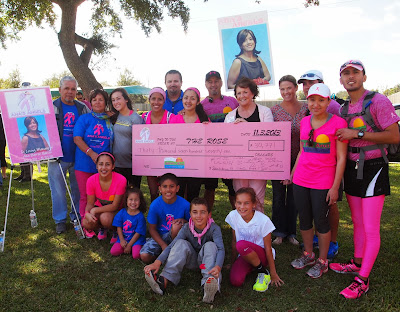 On the
Sunday after Thanksgiving, one of our board members attended a Celebration
of Life for her son. He was only 46 years old. I kept thinking
how young he was and felt so sad. While I cannot fathom even a smidgen of
her grief, I have a son the same age, and wondered how I would handle such a
loss.
On the
Sunday after Thanksgiving, one of our board members attended a Celebration
of Life for her son. He was only 46 years old. I kept thinking
how young he was and felt so sad. While I cannot fathom even a smidgen of
her grief, I have a son the same age, and wondered how I would handle such a
loss.When I consider that some of you are dealing with similar losses and think about how many of our women are facing their own final battle I am reminded once again of why we do what we do. Recently, Helen, our longest living volunteer, was in the hospital fighting for her life. Thank goodness she’s ok now, but those days of worrying were endless!
So we ponder this thing called life. Didn’t Gale, our speaker at the November meeting, make us intimately aware of how silly we are to get so involved in the busy-ness of life and how much value we place on what we think folks ‘expect’ of us? When we lose what is ‘us’ the essence of who we are and who we love and maybe more importantly who loves us, we are truly alone.
The word “busy” consists of two symbols in Chinese which mean: Heart and Killing.
Let us make a promise to each other that we never get ‘too busy’ to tell someone we work with that we appreciate them, or someone we love that we could not imagine life without them.
My holiday wish for you and for The Rose is that we remember what comprises our core values and by God, that no matter what our individual job titles may be, there is not one position here that could ever be considered just a “job.” If you don’t believe that, let me introduce you to all the women we helped, women who did not have a chance or an option except for The Rose.
No matter what, you are making an incredible difference in this world. You are helping a woman live another month or a year or ten years. And, if you still have a doubt of the value of you and your work , then go talk to Donna, our board member, and ask her what that additional month would have meant to her son or his children.
The Rose doesn’t cure this disease called cancer; what we do is give women a little more time.
Time to tell those they love how much each person means to them, time to arrange for a child’s future, time to hug again. Donna’s son didn’t have that time. He was here one day and gone the next. He never had that chance to share, or hug, or say ‘I love you’ one last time.
Don’t you dare let another day pass without doing that. Whoever you love, be it child, mate, parent, or co-worker, friend, neighbor or colleague, go now…right now… and let them know how much you care.
There isn’t a human being on this planet that isn’t hungry for love and appreciation. That is a gift only you can give! Send the email, write the note, or pick up the darn phone and call them. Try it. Nothing you could wrap up in a box would ever have the same meaning as THAT call from you.
May your holidays be rich in ways that cannot be purchased in any store. You are a gift to me and one that I will forever cherish.
All the best to you and yours,



